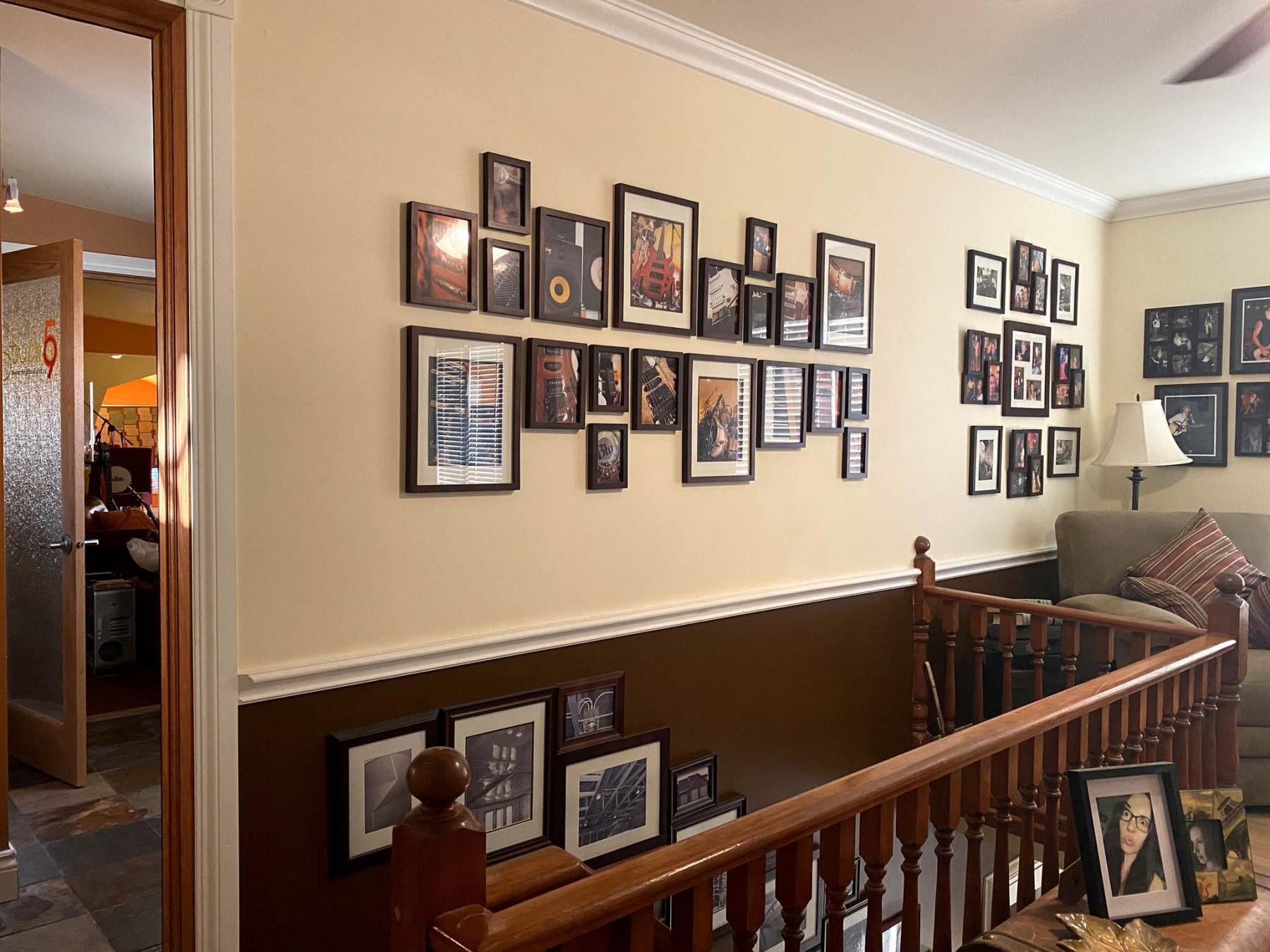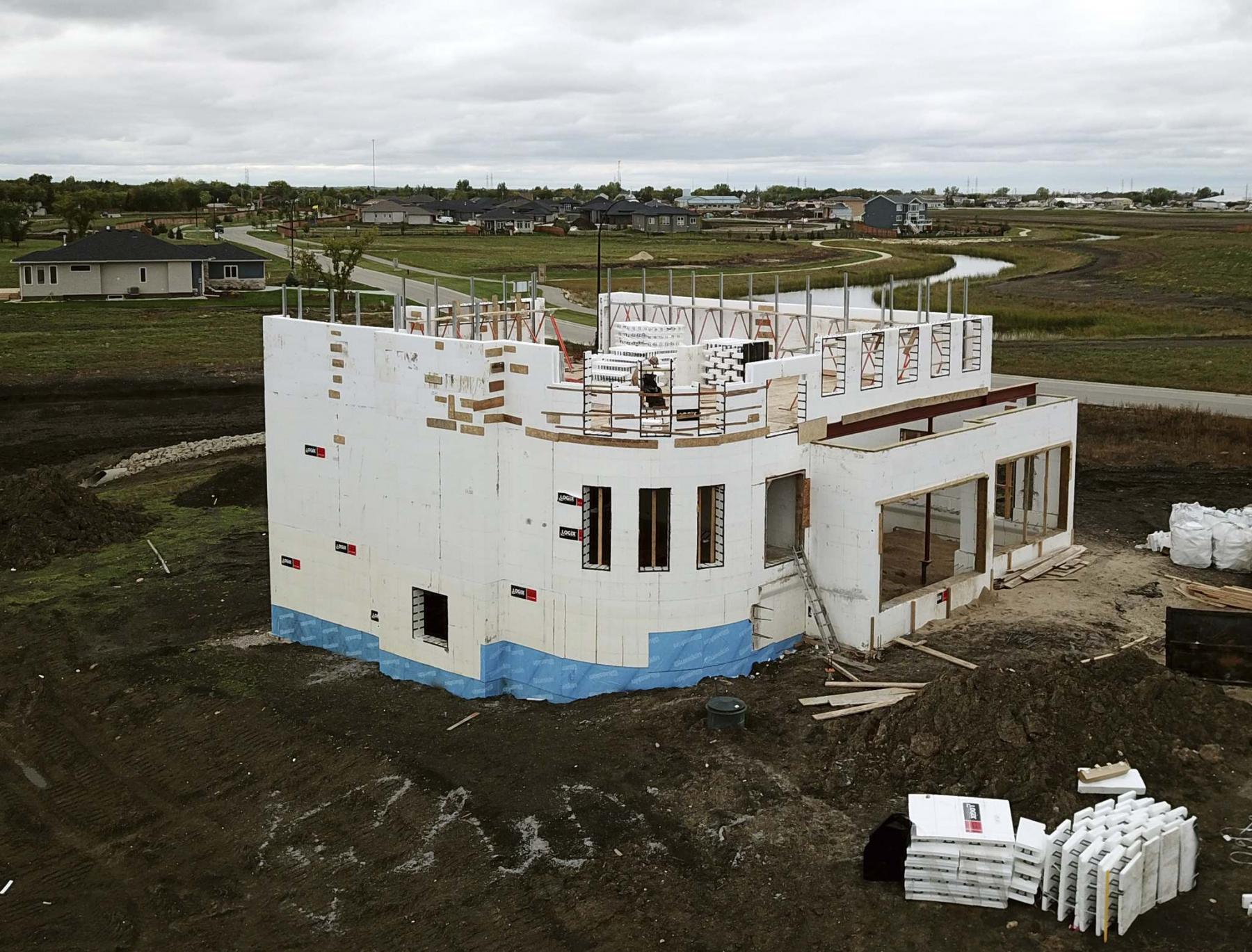Renovation & Design
Renovation & Design
Radiant barriers can complicate insulation job
Question: I have a closed-in deck room that had the roof extended over it, with spray foam insulation over the original metal. It has an open-joist ceiling, and I want some more insulation to cover the joists. This room is on the north side. I got a good deal on rigid foam, R-5, and Tech Shield foil-lined paper roll. I wanted to cover the joists with the foil, facing down, and then with the foam boards. After, I want to spray this with paint as a ceiling, but I noticed you said that’s a potential fire hazard and not code-compliant. I am not sure about thermal dynamics, but I would do that if I could, because it is simpler and cheaper.
If I put the foam between the joists, and the tech shield at the bottom of the joists, then use thin drywall for a ceiling, would that work? Will that insulate properly and with respect to the radiant barrier, and not create vapour issues? The tech shield specifically says that you must leave four inches top and bottom for circulation. I assume that some vapour exchange could take place through both the foam board and also the drywall. Is that correct?
Thanks ahead for any clarification you can give me.
Roger Crane
Answer: Insulating the ceiling of a converted porch or enclosed screened deck can pose significant challenges. Using rigid foam is a good idea, if installed and sealed properly, but products like your reflective foil should not be bothered with.
I am not completely sure how the original metal roof of your enclosed deck was covered, but I will assume it has spray-on foam insulation, with a painted surface, added overtop. That will provide some thermal resistance, but should also provide a good water- and air-resistant barrier. If that is not sufficient insulation for the use of this room adding more insulation beneath, before heating, is a good idea. Since this portion of the building enclosure is now well sealed, you must be careful to ensure you don’t leave any air spaces below that could lead to problems.
In your initial plan, to leave the space between the ceiling joists or rafters open above the insulation could be catastrophic. This large a gap above the insulated and partially air-sealed insulation would leave a perfect place for condensation, frost, and mould growth. Because this area would be substantially colder than the room during the heating season, any air that leaked in through the foam and tinfoil membrane would condense and freeze. The water that would result from the melted winter frost would also be restricted from drying by the insulated ceiling below, and the roof above, and would lead to rot and mould growth in the cavity.
The second method that you proposed would be much more productive, as long as it was well air-sealed. You have not stated whether your foam board was expanded foam or extruded foam. Extruded polystyrene (XPS) foam generally has good air-sealing capabilities, while expanded foam, noted by the small visible balls inside, has limited air-sealing properties. If you use XPS sheathing, you may only have to caulk or foam around the edges and any seams to achieve a proper air seal. Either way, the entire ceiling joist cavity would have to be filled with insulation to prevent moisture issues.
Adding a layer of drywall below would complete the job, as not only would it provide a fire-resistant layer, but allow for proper painting, which the foam alone would not.
The installation of the foil paper membrane may be the component that you could leave out of the equation. This type of product works by reflecting radiant energy. While this may indeed work to reflect this energy back to the living space, most of the heat energy that escapes into attics and roof assemblies is not radiant in nature. Because of the stack effect in buildings, much of the heat that escapes into this area is heated air due to convection, not radiation. The proponents of this type of heat loss reduction membrane are not well versed in building science and poor installation of that type of product can cause serious issues.
Unless you are living in a desert environment in the Southwest U.S., where attic insulation is required to keep attics and buildings cool from the summer heat and sun, this product may be useless or even harmful to your efforts.
Using rigid foam for insulating a roof cavity with limited space between the joists is a good idea, as long as it completely fills the void and is properly air-sealed. Adding products like foil radiant barriers will certainly complicate the job and are otherwise useless and should be left out of the plans.
Ari Marantz is the owner of Trained Eye Home Inspection Ltd. and the past president of the Canadian Association of Home & Property Inspectors — Manitoba (cahpi.mb.ca). Questions can be emailed to the address below. Ari can be reached at 204-291-5358 or check out his website at trainedeye.ca.
trainedeye@iname.com
Renovation & Design
Deodorize upholstery and fabrics with vodka and water mixture
Question: Some time ago I saw a recipe for an upholstery deodorizer made with vodka and water that is sprayed on and left to dry. I would like that recipe if you have it. Thanks, Norma
Answer: You can either spray the fabric with full strength vodka or water it down with a 50/50 solution of vodka and water. Spray and leave to deodorize fabrics.
Question: I hope you can help me with a paint dilemma. I wanted to paint my living/dining room which currently has oil base on it. When I went to get my paint, I asked what was required to prepare the walls in order to use latex paint. I was told to either go with a primer and then two coats paint, or sand the wall lightly to take the gloss off and then go with a paint that has the primer built in.
Because it was a large area I went with the latter and did all the right stuff including washing the wall after. I was told not to skimp on the paint and not to go back and rework any missed area as it dries very quickly. The paint went on beautifully, however, when I went to do the second coat I saw that in places there were areas where the paint had actually dripped and then stopped midway. It was very noticeable and so discouraging. I then had to scrape it off, patch and redo. I am using a brand-new microfibre 10 mm roller, the size suggested. I was so frustrated that I stopped painting after one wall. Have you ever come across this before and if so, what should I do differently when I get up the courage to finish the rest? Unfortunately, I have another full gallon, so I will have to use it up at this cost. Thanks for your help, Corrin
Answer: I can feel your frustration because I have found myself in similar situations. Paint quality is often the culprit between a happy paint project and a screaming on the inside moment. If the paint is thin it will run and drip down the wall. If the paint is not adhering to the wall, it will also run down the wall. Paint experts often recommend preparing walls with a trisodium phosphate wash before paint, to remove greasy residue caused by cooking and everyday dust. Since you followed the advice given to you by the retailer, why not bring the paint back and talk to them about the issue you are having? When paint projects work the way they are supposed to, they can be a therapeutic, fun experience. Don’t hesitate to confer with the paint specialist that sold you the paint, and remember to bring your receipt with you.
Handy hints
• If cookie dough gets gluey, resist the impulse to add extra flour so that the cookies don’t become tough. Cool in the fridge until firm or roll out between two pieces of waxed or parchment paper.
• Add a chilled elegance to your next dinner party. Freeze grapes and add a few to each glass before serving wine.
• Spring planting is best done as early as possible, and as soon as the frost is out of the ground. A newly planted rose establishes itself quickest in the cool moist spring soil, rather than in May, when the air is often hot and dry. Also, the longer growing period will produce more and better blooms.
• To combat black spots on roses spray them with a mixture of one tablespoon of baking soda, one tbsp. light vegetable oil, and one tbsp. dish soap with one gallon of water. If they are too far gone make sure to purchase black spot resistant roses next time. Your local nursery should be able to point you in the right direction as far as which roses grow best in your area.
Note: Every user assumes all risks of injury or damage resulting from the implementation of any suggestions in this column. Test all products on an inconspicuous area first.
Reena Nerbas is a popular motivational presenter for large and small groups, check out her website at reena.ca.
info@reena.ca
Renovation & Design
Skylights have improved, but installation costly
Question: A few years ago, I bought a bungalow condominium unit. Because of the east-west orientation of the unit, the living area does not receive any direct natural light. This condominium has a cathedral ceiling, so I am starting to think of a possible skylight above the living room. In 2009, you published an article in which you expressed skepticism about skylights in our climate. Since then have there been advances in skylight technology or installation methods that have caused you to modify your opinion?
Sincerely, Richard Ellis
Answer: Retrofitting a skylight in an existing building does pose challenges for proper air sealing and prevention of leakage, but with modern insulation materials it is much more practical than in the past. The likelihood of leakage is somewhat dependent on the style of the building and roof system, which may be a major determining factor in whether the cost for the roof modifications may be worth the effort.
Skylights, in their most simple terms, are windows that are installed on the roof rather than the vertical walls of a building. As we all have experienced, windows have a high possibility of leakage, no matter where they are installed. Ones that are installed in a vertical plane are the easiest to waterproof, as the top is the most critical area to protect. Installation of a proper drip flashing, and associated other sub-siding membranes, over the top of the window normally will prevent leakage from rain and snow. The sides and bottom are more easily sealed, often with simple exterior caulking, due to the fact that water drains downward due to gravity. With a skylight, all four sides of the unit are at a risk for leakage, dependent on the slope of the roof, and other factors.
Because skylights sit on a semi-horizontal surface, they have several areas that have to be extremely well sealed at the exterior to prevent moisture intrusion. Not only does the glass and surrounding frame have to be resistant to periodic wind-driven rain, like a vertical window, it has to resist constant moisture on the surface. Skylights can have days, weeks, or months where liquid water, or ice and snow, sit on and around the window portion and on the surrounding roof. For this reason, any skylight has a high probability of leakage into the roof system, but the lower the pitch of the roof, the larger the chances of problems. So, if your condo has a moderate to a steep pitched roof, installation may be less problematic. If your building has a flat or low-sloped roof over the living room, I would definitely reconsider your planned renovation.
The second, and much more insidious, moisture issue with skylights often occurs where it cannot initially be seen. Because of the location of these roof-mounted windows, the area around their frames is embedded within an attic or vaulted roof system. These spaces are subject to extreme temperature swings, so they must be very well insulated and air sealed to prevent heat loss during the colder months of the year. The skylight surface temperature can be significantly lower or higher than that of the rest of the roof it resides in, which often leads to condensation on the surface of the glazing. Most skylights have drip troughs, or other mechanisms, to collect the water which may run down the surface, but these are not foolproof. If the frame or ceiling space around the skylight is not very well sealed and insulated, it can also have issues with condensation, which can lead to more significant negative results than in other areas.
The key to proper installation of a new skylight, in a situation like your home, is to completely insulate and air seal the entire exterior of the skylight assembly inside the attic or roof cavity space. In older homes, this was very difficult to accomplish with traditional fibreglass insulation, or even rigid foam products. All of these older types of insulation were near impossible to perfectly seal, leading to gaps where warm air from the living space could enter. In that situation, condensation is a certainty and in bad cases could lead to significant leakage, rot, mould growth, and major damage to building materials.
To answer your question more directly, there have been products developed, often well before 2009, which make the air sealing and insulation much more practical. The primary material used for this purpose is sprayed-on high-density polyurethane foam. While available at the time of this previous article, it was not widely used in our area due to the high cost and a limited number of contractors. Today, it is readily available, with options for several bulk foam installers with mobile trucks to mix and supply the products onsite. Also, commercially produced two-component foams are available at building supply stores in smaller containers, around the size of standard BBQ propane tanks. These smaller units make accessibility much easier, especially in limited areas like attics, but accessibility is the final piece of the puzzle.
Unless your roof system allows good access all the way around the area of the proposed skylight, proper air sealing and insulation may be very difficult. In that case, a much larger portion of the roofing and sheathing may have to be removed to install the foam. This is much more likely in a vaulted ceiling, like yours, so budgeting for a significant roofing repair cost will also be required.
Installation and sealing around a retro-fitted skylight in your condo may be much more practical than in the past, due to better foam insulation availability. Care must still be taken to do the job very well, which may involve much more time and expense to remove a significant portion of the roof, to allow proper foam application.
Ari Marantz is the owner of Trained Eye Home Inspection Ltd. and the past president of the Canadian Association of Home & Property Inspectors — Manitoba (cahpi.mb.ca). Questions can be emailed to the address below. Ari can be reached at 204-291-5358 or check out his website at trainedeye.ca.
trainedeye@iname.com








